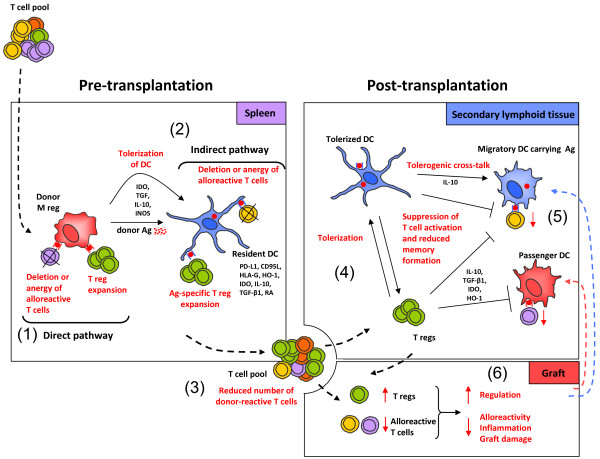Figure 2.
Proposed mode of M reg action. (1) When administered prior to transplantation, donor M regs migrate to spleen, where they present donor antigen through the direct pathway to alloreactive T cells and either delete or anergise them, or induce expansion of regulatory T cells. Human M regs have been shown to delete activated T cells through a contact-dependent mechanism and to suppress T cell proliferation through IDO; however, other suppressor mechanisms may also contribute to M reg function, such as IL-10 and TGF-β secretion, or iNOS activity. (2) It is likely that M regs serve as a source of donor alloantigen, which is captured and presented by immature recipient DCs to alloreactive T cells via the indirect and semi-direct pathways of alloantigen recognition. In consequence, responding T cells may be deleted or anergised, and antigen-specific T regs may be induced. (3) Through these mechanisms, the recipient T cell pool is enriched for T regs and depleted of donor-reactive T cells. (4) After transplantation, recipient T regs could induce tolerogenic DCs in secondary lymphoid organs. (5) Recipient tolerogenic DCs could then suppress activation of T cells. (6) In consequence, an immunological environment conducive to allograft acceptance is established.

